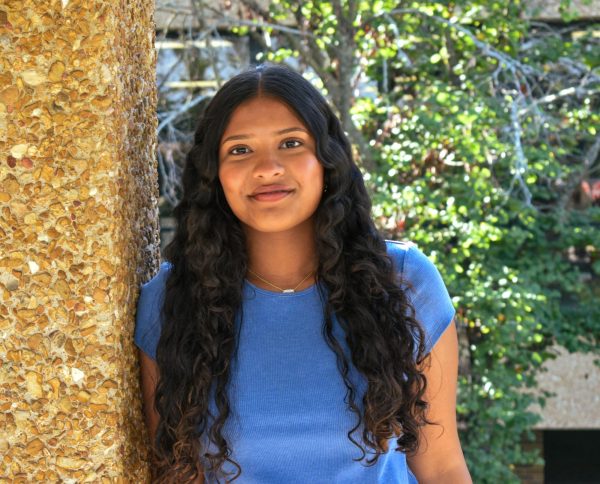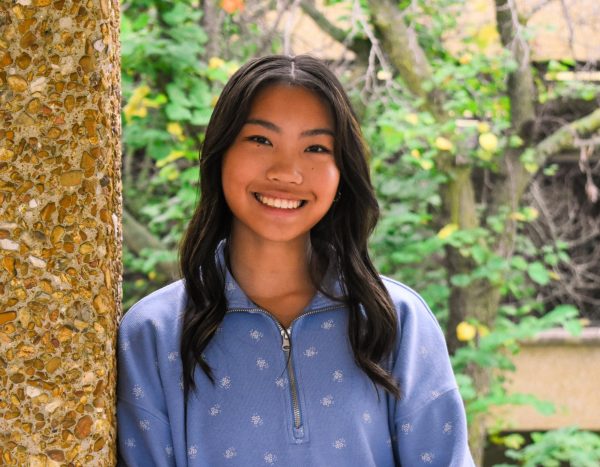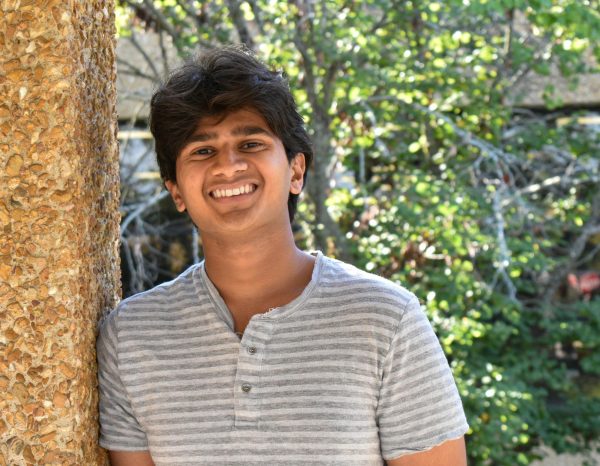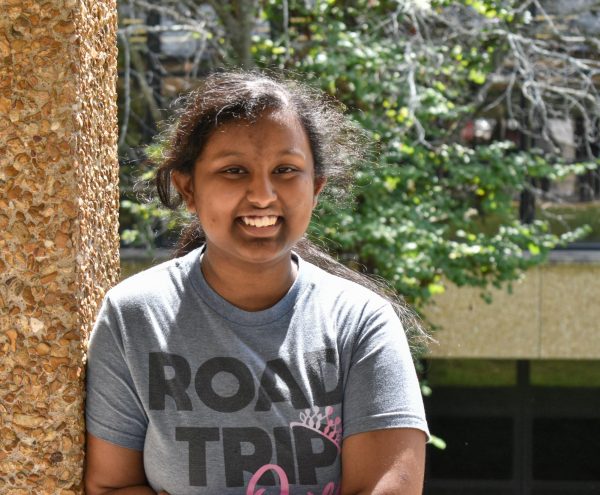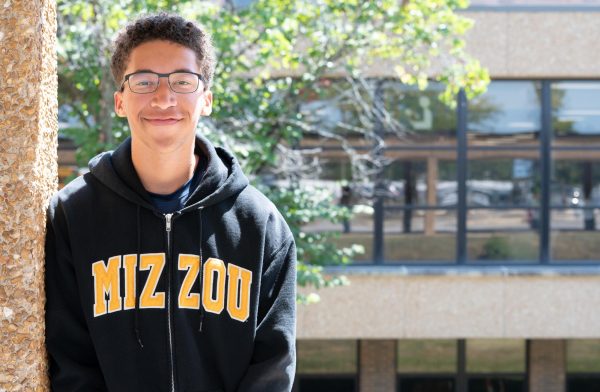A symphony of sounds
![Members of concert band work to play the soaring melodies of "Crowns of Glory" by Jack Wilds during their winter concert. Because of the piece's difficulty, the band had to work together extra diligently to make it sound concert-ready. "[Band has] helped me [with] teamwork because it's not just an individual thing. The whole group has to be put together to make something amazing," Concert Band member and sophomore Ella Bruner said.](https://pwestpathfinder.com/wp-content/uploads/2024/03/unnamed-3-1.jpg)
Over Feb. 27-29, gold brass and steel strings captivated audiences day after day as a week of musical talent unfolded. As the sounds of trumpets and cellos echoed down the halls,┬Ā celebrations of music on each day captured the blend of academia and art. Filling every available seat, family and friends arrived to witness the harmonies of traditional instrumental music, leaving with a respect for the determination of these student musicians. Across four back-to-back performances, the orchestra and band produced ensemble pieces that highlighted both technique and emotional connection, showcasing their dedication to the art of bringing music to West High.
The week began with the orchestra’s annual winter concert, a medley of classic symphonic pieces alongside jazz and popular music that explored the versatility of orchestral music as a medium of expression. The next day, the band continued the winter concert train with their own take on a journey through birth, life and death in the form of a musical depiction of the human life cycle.┬Ā
The third day featured a combined concert and chamber orchestra field trip to MSHSAAŌĆÖs Large Group Ensemble Music Festival, a state-wide event of euphonious evaluation for group student orchestras, where they achieved the accomplishment of an Outstanding-level rating in performance. The symphonic orchestra followed them in attending the festival on the fourth day, earning themselves an Exemplary rating.┬Ā
However, these four days reflected more than the performances produced; with months of preparations on both ends of the music department, these moments mark the final triumph of endless efforts from student musicians. With daily practices, students sacrificed time in hopes of ultimately creating bodies of art that told a story through the power of sound. Regardless of the outcome of each dayŌĆÖs performance, the dedication of these students to creating music remained at the forefront of every achievement.
![Following orchestra director Ed Sandheinrich's tempo, members of symphonic orchestra focus in on their music during their Winter Concert. In order to sound cohesive on stage, the players had to work together and learn off of each other. "[Orchestra] gives you the ability to persevere through hard things. You're not always going to love everything you play, and it teaches you to work hard even when you don't like what you're doing," senior and symphonic orchestra member Cora Tiemeier said.](https://pwestpathfinder.com/wp-content/uploads/2024/03/unnamed-2-2.jpg)
Orchestra kicked off the musical week on Feb. 27 with their annual winter concert, featuring members of the concert, chamber and symphonic sections. Additionally, the concert included a performance by the orchestraŌĆÖs cello-only section, known as the Cello Choir.┬Ā
The concert followed months of preparation in the effort of musical cohesion and unity. Under the guidance of orchestra director Ed Sandheinrich, each section worked to perfect their respective pieces.┬Ā
ŌĆ£WeŌĆÖve been preparing [for the concert] since November, on and off, with in-class rehearsals. Symphonic [Orchestra] also had a couple of clinicians come in,ŌĆØ Sandheinrich said. ŌĆ£We got ready in class every day.ŌĆØ┬Ā
The process of preparing for a performance like this one is not straightforward or easy, due to the complexity of the music. However, despite setbacks and issues while rehearsing, the players worked to make everything sound clean and polished by performance day.┬Ā
ŌĆ£[In our] last concert, we didn’t do so well. There [were] a lot of intonation issues, and our playing wasn’t together. What we did to fix that was record and listen back to our playing a lot, and Mr. Sandheinrich gave us a lot of feedback,ŌĆØ Cello Choir member and freshman William Tanudyaya said. ŌĆ£[During] this concert, we were looking to show off our hard work.ŌĆØ
The pieces that the orchestras performed ranged from the exalted work of classic composers such as Dmitri Shostakovich and his ŌĆ£Waltz No. 2ŌĆØ to the melodies of more modern tunes like an arrangement of ŌĆ£I Want To Hold Your HandŌĆØ by The Beatles.┬Ā
ŌĆ£My favorite song to play [was] ŌĆ£Stand by Me.ŌĆØ I didn’t really know the song when we started playing [it], but I grew to like it. Playing it at the concert was fun because there [were] high notes,ŌĆØ Tanudyaya said. ŌĆ£You could really make it sound beautiful.ŌĆØ
A piece that the orchestra performed where their hard work was apparent was the Symphonic OrchestraŌĆÖs performance of ŌĆ£Two Elegiac MelodiesŌĆØ by prolific romantic-era composer Edvard Grieg.┬Ā
ŌĆ£I feel like we have a good interpretation of [Two Elegiac Melodies.] The kids were playing it really well: [itŌĆÖs] probably the one that they played the best,ŌĆØ Sandheinrich said.┬Ā
The piece, divided into two distinct sections named Hjertes├źr and V├źren, was part of a unique opportunity for students taking Creative Writing 1. Collaborating with English teachers Dan Barnes and Shannan Cremeens, Sandheinrich featured ekphrastic poems written by three different students in the concert program. Ekphrasis, the act of writing a poem in response to a piece of music or work of art, is taught in the curriculum of Creative Writing 1 around the same time as when the orchestra rehearses for the winter concert.┬Ā┬Ā
ŌĆ£The connection between music and writing is the connection of the humanities. Art can’t help but inspire more art,ŌĆØ Barnes said. ŌĆ£Through writing, we are able to connect, empathize and value the human experience.ŌĆØ
A graphic of the ekphrastic poems written by Creative Writing students for the orchestra’s winter concert. (Cindy Phung)
Barnes, Cremeens and Sandheinrich were very satisfied with the poems that ended up on the final program and plan to continue collaborating in the future. Outside of ŌĆ£Two Elegiac Melodies,ŌĆØ the concert overall was a moment of reflection for all the players about their journeys as musicians during the year.
ŌĆ£The improvement of the orchestra overall was noticeable from the start of the year when we first got [the pieces] to the actual concert, so I’m happy with the improvement,ŌĆØ Concert Orchestra member and freshman Adam Thomas said.
Concerts like these are just one of the ways that the orchestra program allows students to form bonds with each other and forge friendships around the music that they play.┬Ā
ŌĆ£My favorite part of orchestra is the friendships. Because it’s a teamwork-based class, you play together, you have to work together [and] if you’re not in tune, you can ask your friends for help,ŌĆØ Thomas said. ŌĆ£[Orchestra] also made me look at other people’s perspectives, making friendships [that] really changed my outlook on a lot of things. I’m grateful for [it] and all the things [it] taught me.ŌĆØ┬Ā
Overall, the winter concert served as the culmination of months of hard work by the orchestra.┬Ā
ŌĆ£[Music] is such a big part of who we are, and to learn about, appreciate and connect to [it], itŌĆÖs such a nice thing to do,ŌĆØ Sandheinrich said. ŌĆ£During your day, thereŌĆÖs a lot of subjects where youŌĆÖre using your brain in the same way, [but] when you take a music class, you start using your brain differently.ŌĆØ┬Ā┬Ā┬Ā
![Captivating the audience with every note, members of symphonic band play during their annual winter concert. The band concert was just one of four distinct performances by a musical ensemble during the week of Feb. 26. "[Band] is a place where everyone can be themselves and express and share what they have to offer. [It's] a class where you have the opportunity to meet other people and be a part of something special," band director Brad Wallace said.](https://pwestpathfinder.com/wp-content/uploads/2024/03/unnamed-1-1.jpg)
The musical festivities continued the next evening, Feb. 28, with the band programŌĆÖs winter concert. The concert, hosted at the Principia Ridgeway Auditorium, featured performances by the middle school band as well as the high school concert and symphonic bands.┬Ā
ŌĆ£WeŌĆÖd been working on the music since the middle of November. The biggest challenge [was] making sure everyone [knew] their part,ŌĆØ band director Brad Wallace said. ŌĆ£ItŌĆÖs like a big puzzle.ŌĆØ
A motley of different moods and tones that showed their talent, a lot of the music that the bands played was far from simple.┬Ā
ŌĆ£I really like lyrical pieces like [our second song ŌĆ£Variations on a Korean Folk SongŌĆØ.] [It] was probably the most difficult for [symphonic band]. It was the longest [piece] with a lot of different tempos and sections; we did a good job putting it together so IŌĆÖm proud of us for that,ŌĆØ symphonic band member and senior Alex DeLuca said.
Other highlights from the concert include the sentimental piece ŌĆ£With Every SunriseŌĆØ by Robert Sheldon, written in memory of SheldonŌĆÖs lifelong friend Kris Robert Sebens. Portraying a journey through grief, the piece blends together moments of emotional turmoil and poignant resolution to create a unique listening experience.┬Ā
During the concert, Wallace and fellow band director Jacob England took time to congratulate members of the Symphonic Band who qualified for All-Suburban and All-State band, titles reserved for those who excel in their knowledge of music and their respective instruments.
ŌĆ£I was genuinely shocked; I didnŌĆÖt think I was [going to make it.] [Making All-Suburban band] is difficult. You get a packet right before school ends, and you have the summer to prepare it,ŌĆØ DeLuca said. ŌĆ£I didnŌĆÖt practice it that much over the summer, but in the weeks leading up to [auditions for All-Suburban band], I practiced every single day. ItŌĆÖs a lot of work.ŌĆØ
Symphonic Band member and sophomore Cara Purdy also scored status as an all-suburban band member. Purdy was also one of even fewer people to qualify for All-State band, which she headed to Columbia, Mo. to audition for.┬Ā┬Ā
ŌĆ£I had two auditions [the day of competition], and my first audition went terribly, but I guess [the judges] saw something in me and gave me a callback. [After the second audition], we were on our way home, and I [got] a message from one of my band directors. Then I [looked] at the list and [saw] that I made it and screamed,ŌĆØ Purdy said.┬Ā
While each band played their setlists without any problem on the day of the performance, their cohesive sound was actually the result of multiple months of meticulous practicing and tweaking.
ŌĆ£[ŌĆśCrowns of GloryŌĆÖ by Jack Wilds] was the majority of our time during class. There was a lot of blending between instruments. It took a lot of time,ŌĆØ Concert Band member and sophomore Ella Bruner said.┬Ā
Nevertheless, the Winter Concert was a night to remember for everyone involved, filled to the brim with ringing melodies and emotive cadences. The accomplishments of the band as a whole were a great example of the strength of the community and the passion of the band members.┬Ā
ŌĆ£[Being in band] means the whole world to me,ŌĆØ Purdy said. ŌĆ£WeŌĆÖre dedicated people [and] itŌĆÖs an amazing community to be a part of.ŌĆØ
Overall, band and music classes offer a unique learning experience for students who participate in them, existing in a separate sphere from the coursework of everyday classes.
ŌĆ£ThereŌĆÖs no other class like [band] in the building,ŌĆØ Wallace said. ŌĆ£ItŌĆÖs a class where we all work together towards a common goal.ŌĆØ
![Every year, members of orchestra head to MSHSAA's Large Group festival to be graded by a panel of judges on their playing. The judges' feedback helped the players recognize how they could improve their performances. "[Large Group Festival is] important so we know individually what we can do to improve and also as a group what we can do to play better and increase our sound quality," Symphonic orchestra member and sophomore Victoria Gold said.](https://pwestpathfinder.com/wp-content/uploads/2024/03/unnamed-5.jpg)
Ending the week on a high note, the orchestra performed yet again on Feb. 29 and March 1, this time traveling to Lindbergh High School for evaluation through the MSHSAA Large Group Ensemble Music Festival. The concert and chamber sections combined for their performance while symphonic followed suit for their separate evaluation the next day.┬Ā
The Large Group Ensemble Festival event follows a process of performing a series of songs in front of judges, who evaluate qualities of musical cohesion, technique and emotion. Afterward, the group moves to a separate room, tasked with sight-reading an unfamiliar piece of music and judged on their ability to perform it cohesively on-command.┬Ā
ŌĆ£ThereŌĆÖs something different about performing for a judge that makes people really focus and prepare, so having that angle has helped us focus a lot in class to get things done,ŌĆØ Symphonic Orchestra player and senior Cora Tiemeier said.┬Ā
The orchestra is then evaluated based on a five-scale rating, ranking highest to lowest from Exemplary to Ineffective. Through the feedback of the rating, the students were able to visualize the techniques to improve upon based on judge commentary.┬Ā
ŌĆ£It’s important to get feedback from another person’s perspective because if it’s just your peers and your teacher telling you, you’ve already heard the same thing over and over, and it blows over your mind,ŌĆØ Concert Orchestra member and freshman Sara Ashok said. ŌĆ£We know we weren’t the best, as some of our intonation was definitely off, [but] to learn about what we’re doing wrong with our music and spots that we could fix was a good experience.ŌĆØ
Despite the constructive criticism, the judgesŌĆÖ feedback also praised the orchestra on their impressive technicality and cohesion, providing the students with not only a boost of self-confidence but also an understanding of where the orchestraŌĆÖs quality of sound lies.┬Ā
ŌĆ£[The feedback] was accurate. We’ve been working on these songs for a couple [of] months because we did them for the concert, Large Group and for All-Districts next week and the ratings reflected [that work],ŌĆØ Symphonic Orchestra member and sophomore Victoria Gold said.┬Ā ŌĆ£I also like being able to perform in front of a judge [because] we know what we can do to improve individually and as a group to play better and increase our sound quality.ŌĆØ┬Ā
The orchestra worked to perfect their pieces from the winter concert for the Large Group Ensemble Festival, practicing with an emphasis on tone, intonation and unity. Beginning with Kirt N. MosierŌĆÖs ŌĆ£Danse Estrang├®,ŌĆØ a percussive melody that developed the cultural sounds of traditional South American music, the Concert and Chamber Orchestras delivered a striking introduction to their lineup of songs.┬Ā
ŌĆ£We played ŌĆ£Danse Estrang├®ŌĆØ the best because the intonation was all together. We worked hard on it for a solid three months before [Large Group] so the rating was well-deserved,ŌĆØ Ashok said.┬Ā
Consequently, the connection between the members of all groups of the orchestra increased as they worked extensively under the common goal of producing a well-executed performance.┬Ā
ŌĆ£Orchestra class is a group activity. You have to be willing to work with people and know that you don’t always know right. You just have to keep improving; how much you do will impact the class,ŌĆØ Tiemeier said.
Additionally, the Large Group Ensemble Festival offers a unique experience in that after performing, the orchestra can watch orchestras from other schools play for evaluation. With this opportunity, the students receive a firsthand connection with other performing orchestras while being able to study their musical techniques.┬Ā
ŌĆ£It’s fun to listen to different groups because every group is going to have their own way of playing things and their own artistic interpretation of music. It’s cool to listen to how their group works together,ŌĆØ Tiemeier said.┬Ā
Overall, the environment of performing for a professional judge and receiving an evaluation serves as a space for musicality to grow. Through the Large Group Ensemble Festival, members of the orchestra gained a sense of unity and resilience under their efforts for the performance, coming out of the field trip with not only high technical ratings but a community experience to learn from as well.┬Ā
ŌĆ£[Large Group] gives you the ability of determination to persevere through hard things. It teaches you how to be versatile. You’re not always going to love everything you play, but the outcome teaches you to work hard,ŌĆØ Tiemeier said. ŌĆ£When we get our scores, it helps us see where we are, but it also gives us a boost to see that all that work we put in wasnŌĆÖt for nothing. It’s good to hear, and itŌĆÖs good to learn how we can make our future pieces even better.ŌĆØ
-
![Gazing up from the stage, junior Joseph McCurdy who played Peter Pan in the school play, Lost Girl, sits next to senior Juliana Rogers, who plays Wendy Darling, during a theater rehearsal. McCurdyŌĆÖs passion for theater began when he observed a West High production in middle school. ŌĆ£I've been in the high school theater program since I was a freshman. I've always loved theater, but [what prompted me to join] was [when] I went to see [a performance here] when I was in middle school, and it was super cool,ŌĆØ McCurdy said.](https://pwestpathfinder.com/wp-content/uploads/2025/11/IMG_6535-1200x798.jpeg) NewsIn the spotlight
NewsIn the spotlight -
 NewsNorthern lights illuminate skies over St. Louis
NewsNorthern lights illuminate skies over St. Louis -
![Standing tall, stacked in a precise formation, the cheer team strikes a signature pose during halftime on Sept. 12 at the varsity football game. Nearly a month after this performance, the cheer team performed at the Missouri Cheerleading Coaches Association (MCCA) regional competition on Oct. 4, 2025. ŌĆ£We've all come [to] work together a lot more,ŌĆØ sophomore Elyssa Philippi said. ŌĆ£We're a lot closer than we were [earlier in the season] and going to state has made us closer [in] trying to work with each other, learn [new] skills and make our team better.ŌĆØ](https://pwestpathfinder.com/wp-content/uploads/2025/11/DSC5139-1.jpg) NewsHands linked, hearts soaring
NewsHands linked, hearts soaring -
![Handing out candy to excited trunk-or-treaters, President of the United Nations ChildrenŌĆÖs Fund club and junior Sara Ashok represents that group. Ashok was eager to participate in this event for multiple reasons. ŌĆ£I really wanted to be a part of the event because I get to help create memories for kids and spend time with my friends, spreading the things [I'm passionate about],ŌĆØ Ashok said.](https://pwestpathfinder.com/wp-content/uploads/2025/11/DSC_8648-1-1200x800.jpg) NewsA night of sweet fun
NewsA night of sweet fun -
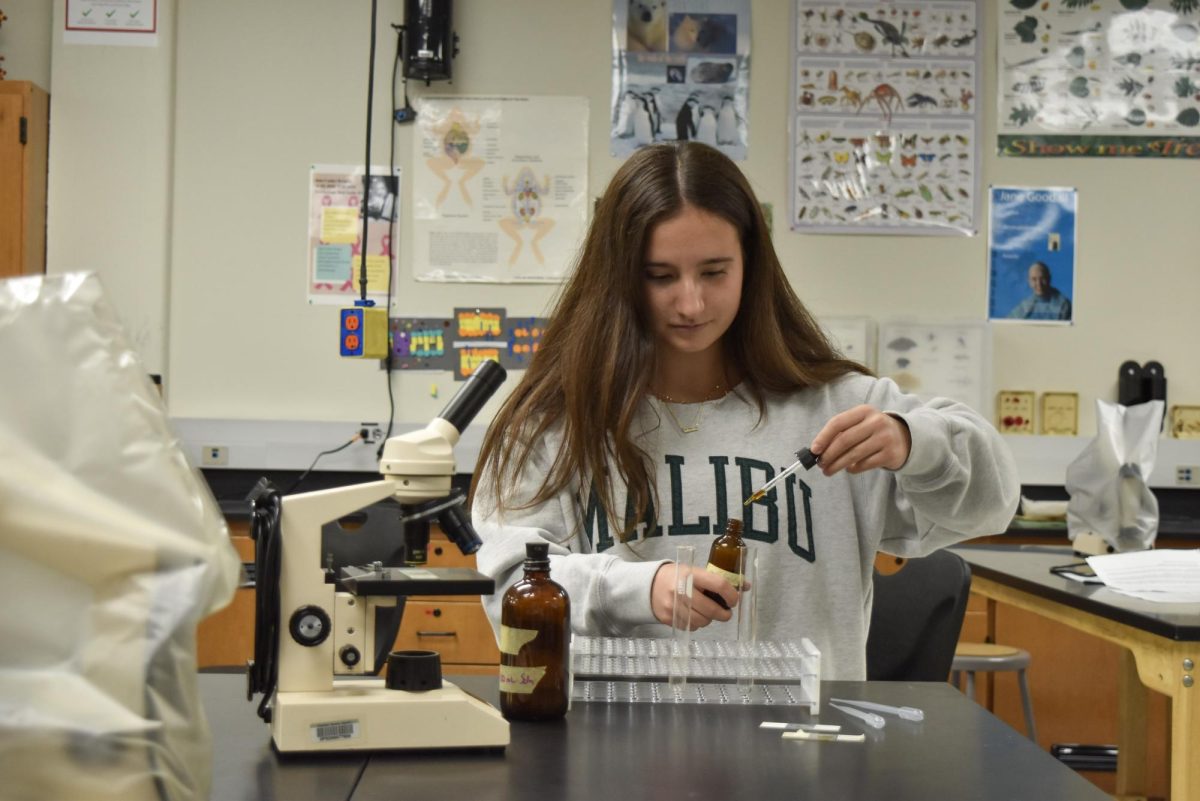 NewsBeta Chi Pi returns: Reviving a science community at West
NewsBeta Chi Pi returns: Reviving a science community at West -
![Smiling in a sea of Longhorns, Fox 2 reporter Ty Hawkins joins junior Darren Young during the morning Oct. 3 pep rally. The last time West was featured in this segment was 2011. ŌĆ£[I hope people see this and think] if you come to [Parkway] West, you will have the time of your life because there are so many fun activities to do that make it feel like you belong here. I was surprised so many people attended, but it was a lot of fun,ŌĆØ Young said.](https://pwestpathfinder.com/wp-content/uploads/2025/10/Edited2-1200x798.jpg) NewsRise and shine
NewsRise and shine -
![West High seniors and families listen as a representative of The Scholarship Foundation of St. Louis, Teresa Steinkamp, leads a Free Application for Federal Student Aid (FAFSA) workshop. This session, held in the library, provided guidance on financial aid, scholarships and student loan options. ŌĆ£This event is very beneficial for any seniors who are applying to or considering applying to colleges after high school [because] the cost of college is on the rise for seniors and parents,ŌĆØ college and career counselor Chris Lorenz said.](https://pwestpathfinder.com/wp-content/uploads/2025/09/DSC_4478-1200x778.jpg) NewsFrom questions to clarity: Seniors and parents attend FAFSA session
NewsFrom questions to clarity: Seniors and parents attend FAFSA session -
![Senior Kamori Berry walks across the field during halftime at the Homecoming football game on Sept. 12. During the pep assembly earlier that day, she was pronounced Homecoming Queen. ŌĆ£I thought it was nice that the crowd [started] cheering right away. I know [my friends] were really excited for me, and my family was happy because typically non-white people don't win,ŌĆØ Berry said.](https://pwestpathfinder.com/wp-content/uploads/2025/09/DSC7046-Enhanced-NR-1200x798.jpg) NewsGolden traditions
NewsGolden traditions -
 NewsPowder Puff, Powder Play
NewsPowder Puff, Powder Play -
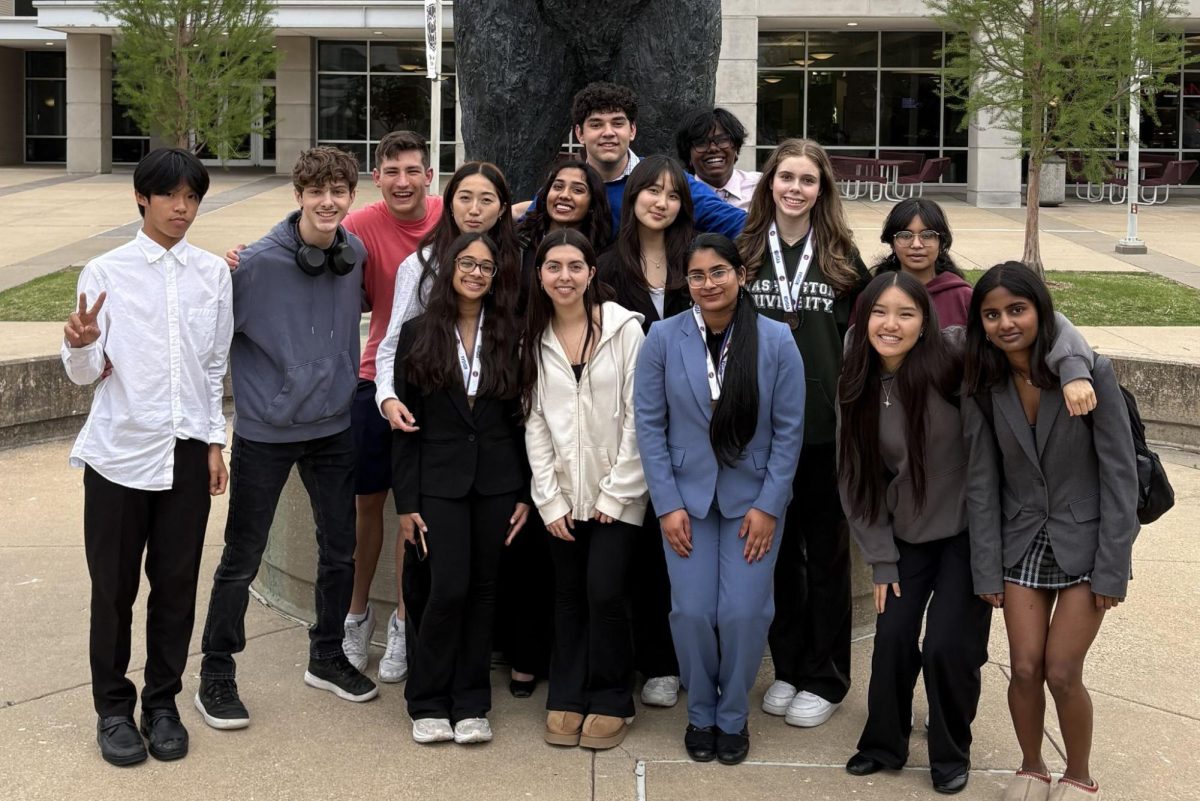 NewsVoices of the herd
NewsVoices of the herd
